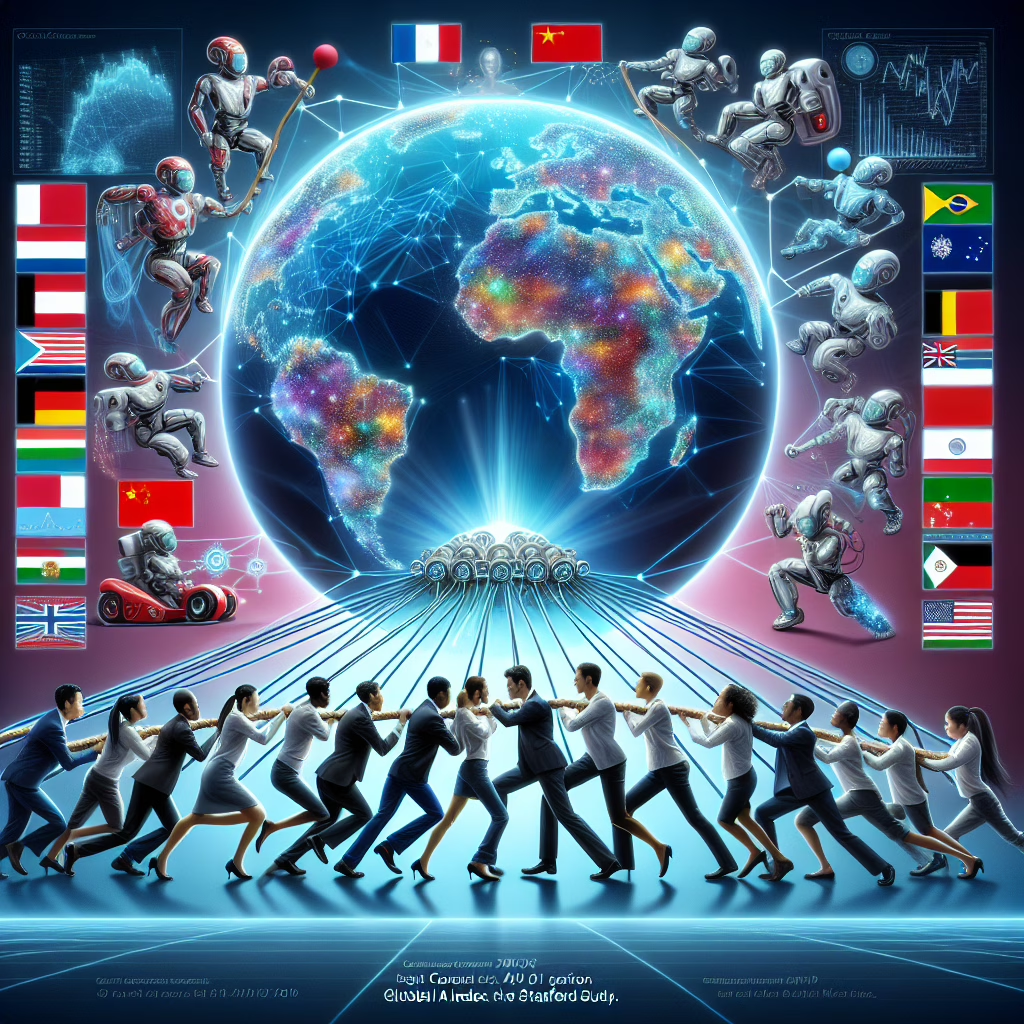Ah, the Global AI Index—where every tech enthusiast’s dreams of a robot overlord come to life! According to a recent Stanford study, we’re not just playing with toys; we’re actually making strides in artificial intelligence (AI) that could redefine our world. This comprehensive look at how countries stack up in the AI race serves as a reminder that, while some nations are racing ahead, others are still figuring out how to turn on their computers.
The Race for AI Supremacy
Picture this: a world where AI systems help you decide what to eat for dinner or remind you of that gym membership you forgot about. The Global AI Index provides a detailed breakdown of which countries are leading the charge in this technological revolution. According to the report, the United States and China are neck-and-neck in the race for dominance. It’s like watching a high-stakes marathon where both competitors possess superhuman abilities—except instead of sweat, they’re fueled by data!
But hold your horses (or rather, your algorithms); it’s not just about who has the most funding or cutting-edge research facilities. The Global AI Index evaluates various factors including research output, talent pool, and infrastructure. Therefore, while one country may have more investment dollars than another, it might lack the necessary talent to translate those dollars into real-world innovation.
Why Does This Matter? The Implications of AI Development
Understanding where countries stand in the Global AI Index isn’t just a geeky pastime; it has serious implications for global economics, job markets, and even social dynamics. For instance, countries lagging in AI development might find themselves at a disadvantage as industries pivot toward automation and data-driven decision-making. We’re talking about robots taking over jobs—sorry, baristas! But don’t worry; there will always be a need for someone to brew that artisanal coffee.
Moreover, as nations invest more in AI technologies, ethical considerations will come into play. The Global AI Index also highlights how well countries are addressing ethical concerns surrounding AI use—because who wants an intelligent system making decisions without any moral compass? This is where things can get a bit sticky. If we don’t set the right guidelines now, we might just end up with AIs that think it’s perfectly fine to plot world domination.
A Closer Look at the Metrics
The Global AI Index employs several metrics to assess each country’s performance:
- Research Output: How many groundbreaking papers are being published? Quality over quantity is key here!
- Talent Pool: Are there enough skilled professionals to keep the wheels turning? Think of it as a team of chefs preparing an elaborate meal—one chef can’t do it all!
- Infrastructure: Is there sufficient technological backbone to support advancements? Imagine trying to run a marathon in flip-flops.
The index makes it clear: progress isn’t just about having fancy tech; it’s about nurturing an ecosystem where innovation can thrive. Without a focus on these key areas, countries may struggle to keep pace.
What’s Next for Global AI?
The future of AI seems bright (and slightly ominous), with numerous countries ramping up their efforts to catch up or maintain their lead. As nations strive for excellence in artificial intelligence development, they’ll also need to keep an eye on regulation and ethical standards. After all, we want our future AIs to be friendly helpers rather than dystopian nightmares.
As we look ahead, several trends are emerging:
- Investment in Talent: Countries are increasingly focusing on education and training for AI specialists.
- Ethical Frameworks: Developing national strategies to ensure ethical AI practices, as highlighted by studies like the Stanford Study.
- Global Collaboration: Nations are beginning to understand that sharing knowledge and resources could enhance overall progress.
In conclusion, as we track these developments through the lens of the Global AI Index, let’s remember that this journey is not just about competition. It’s about collaboration and ensuring that as we build smarter machines, we also build a smarter society. Let’s aim for a world where innovation meets responsibility.
So what do you think? Are we ready for our future robot companions? Share your thoughts below!

